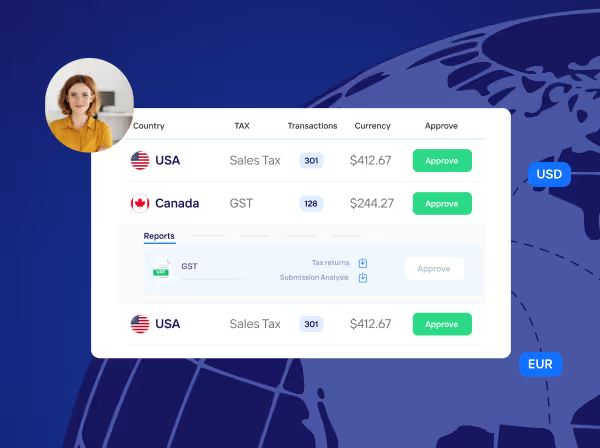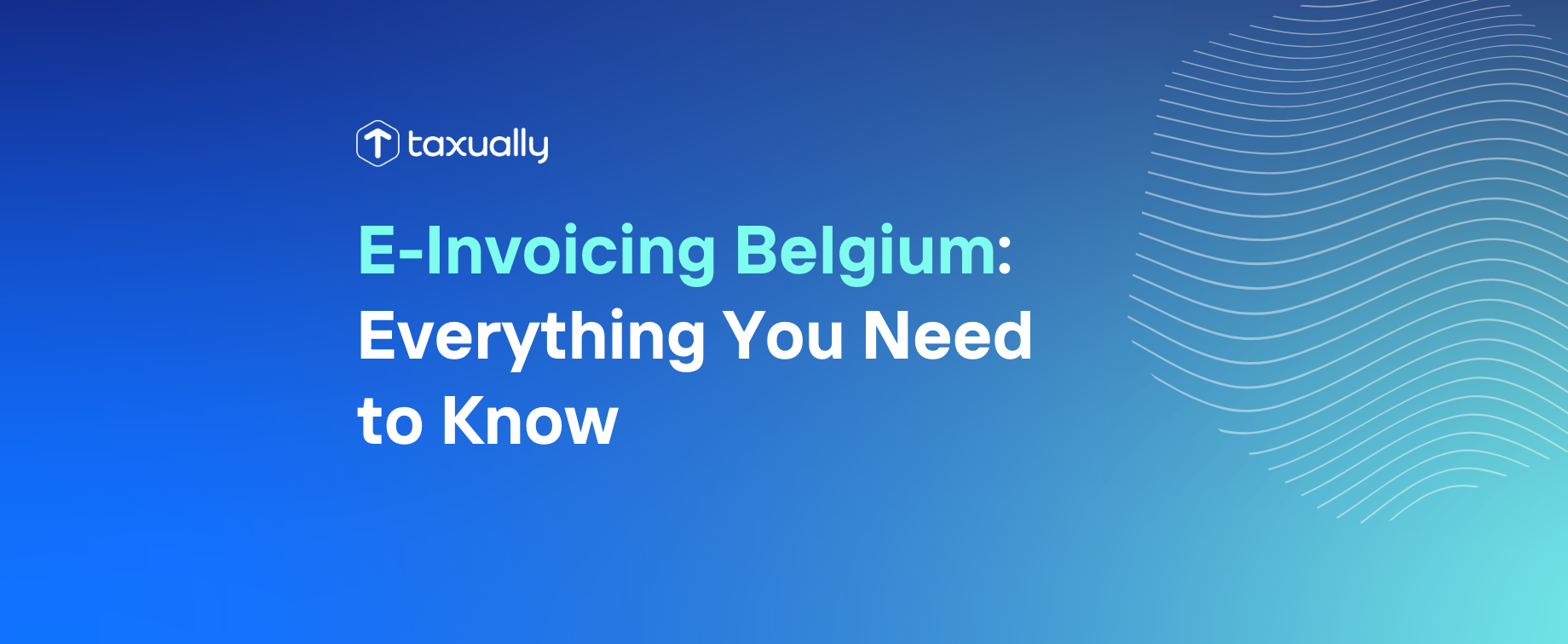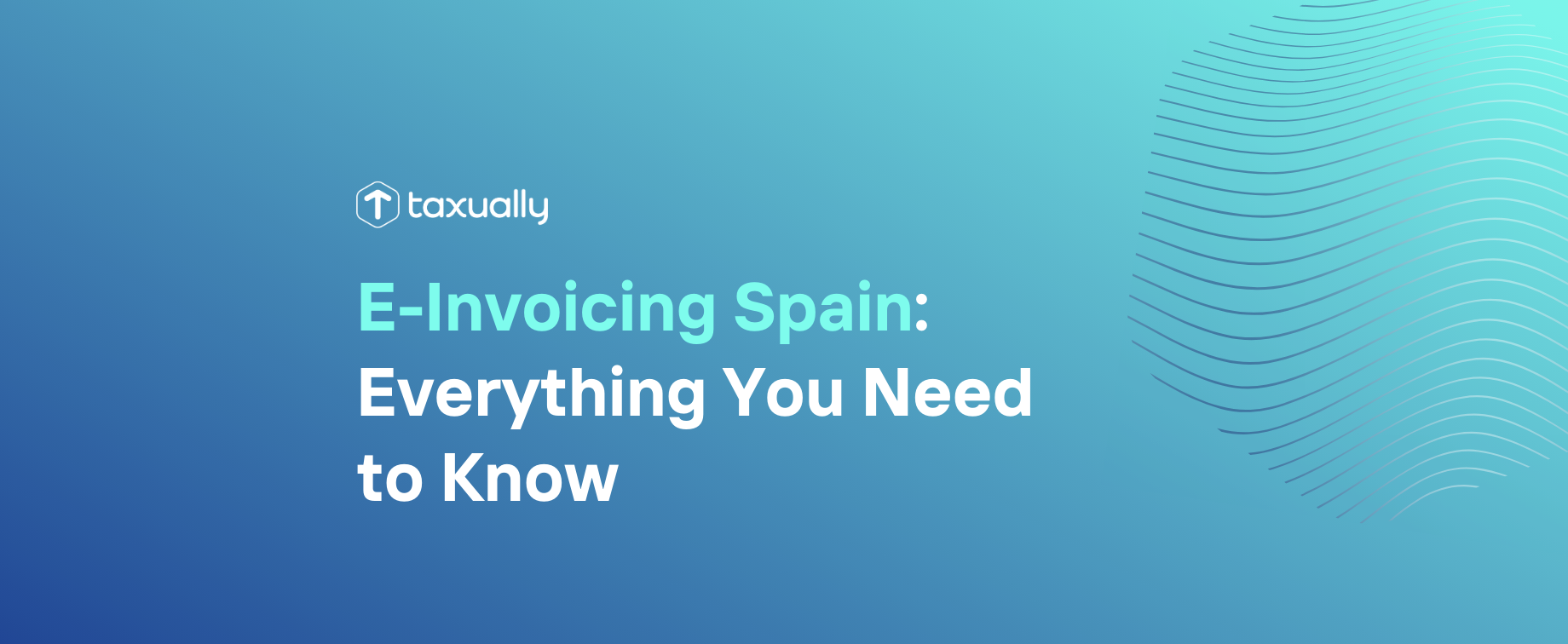Key takeaways
- VAT invoices are a required document issued by UK businesses for customers upon purchase of goods or services.
- Supplier and customer details, VAT registration number, invoice date, and tax point must be included on the invoice to ensure proper financial records and tax compliance.
- Electronic invoicing must adhere to HMRC regulations. Best practices include implementing access controls, secure storage & backups, understanding legal requirements & adhering to applicable regulations.
In today’s business environment, having an up-to-date knowledge of HMRC VAT invoice regulations in the UK is vital, as trying to understand them can be difficult. This guide to HMRC invoice rules and best practices will make it easier by outlining key components like registration, electronic invoicing, and much more. So, let's jump into what every company needs to know about these requirements for successful financial data accuracy and tax compliance. Here's our VAT only invoice HMRC guidance:
UK VAT invoice basics
VAT (Value Added Tax) is an essential part of doing business in the UK, and accurate invoicing aids in both financial record keeping and tax compliance. A valid VAT receipt takes form as a document given by suppliers to customers upon buying goods or services, this being known as a VAT invoice. Its purpose is to clearly show how exactly the Value Added Tax has been applied on each transaction it includes, such as specifying what exact rate was used for those specific supplies bought.
The generation of these documents is mandatory for VAT registered businesses. They must present their clients with appropriate VAT invoices when necessary. There are three types: full VP receipts, simplified VP bills, valid vat receipts, and modified vat paper trail which all serve various purposes but play crucial roles regarding management of finances. Each type will include its own individual requirements depending on the kind of items/services offered so that everything can be tracked back correctly according to regulations.
VAT registration and invoicing
VAT registration is a critical step for companies located in the UK, due to its impact on invoice specifications. Once registered for UK VAT, firms must send out invoices detailing output tax that needs to be paid back to HMRC correctly. The purpose of these documents is so there can be an exact calculation of taxes owed or reclaimable from HM Revenue & Customs (HMRC).
For B2B dealings, typically a VAT invoice will need to be provided. If dealing with retail items which have not been given the stamp of approval by being subject to Value-Added Tax, then no such paperwork would need to be submitted unless requested by customers as this emphasises understanding your business’ status when it comes to registering and creating related invoicing processes.
Types of VAT invoices
In regards to Value-Added Tax (VAT) invoices, there are three main types: full VAT invoice, simplified, and modified. A full one provides the most extensive information for customers regarding the total amount payable including VAT. It is issued when such cost exceeds £250 in cases of either supplies or services. Simplified ones contain fewer particulars than complete vouchers but still fulfill His Majesty’s Revenue and Customs (HMRC) conditions with transactions priced at no more than £250 inclusive of value-added tax. Reduced detail versions too may be utilized where a comprehensive voucher isn’t obligatory like small amounts owing payments scenarios as an example that meets HMRC requirements nonetheless.
Essential components of a VAT invoice

It is absolutely critical that all VAT invoices contain the required components in order to facilitate accurate calculation and payment of relevant taxes. A UK-based VAT only invoice needs to have the date and time of supply, supplier’s name, address, and their VAT registration number included on it. It must also feature the recipient’s name and delivery address. By omitting these crucial details businesses risk having an invalid document for HMRC purposes – resulting in difficulties reclaiming input tax or any potential audits from them afterwards. To ensure proper financial record keeping adheres closely to legislation requirements, businesses need to make sure every single VAT only invoice includes the necessary information.
Supplier and customer details
VAT invoices must contain accurate supplier and customer information for tax compliance. This should include the full business name, address, and VAT registration number of both the provider of goods or services as well as to whom they are supplied. Having these details ensures that proper financial records can be kept regarding said products or services being provided. If a sole trader is involved, their own individual VAT registration number also needs to be included on the invoice. Limited companies require its full corporate name from when it was incorporated into any associated documents too.
VAT registration number
The VAT registration number is a critical part of any paid vat invoice and it identifies the business as an officially registered VAT payer. It’s necessary for businesses to provide accurate, valid information when submitting their invoices with this unique code from HMRC included on them. Otherwise, they could face significant penalties or fines due to incorrect tax payments. To become VAT registered, companies need to register with HMRC, then can check whether the identifying number assigned is indeed correct by using validation services provided by HMRC themselves. This supports keeping records accurately and in line with rules governing taxes while ensuring that proper amounts are paid out according to the given rate of VAT applicable.
Invoice date and tax point
The invoice date and tax point are of great importance when it comes to VAT invoices. This is because the time at which goods or services were supplied determines what date of supply return needs to be recorded in terms of value-added tax, also known as VAT. The date on which an invoice was issued must also be noted since this helps ensure that calculations for taxation purposes have been done correctly, avoiding issues come audit time with HMRC. To guarantee accurate financial records, all relevant data should always include both the invoice date and the tax point information directly onto your VAT Invoice documents.
Simplified and modified VAT invoices
VAT invoices can come in different forms, such as simplified or modified versions which are more suitable for smaller transactions. Knowing the difference between these two types of VAT invoices and when to use them is key to ensuring proper calculations and record keeping. It’s important to be aware of their specific requirements so that accurate financial records, tax compliance, and appropriate calculation/payment of VAT can all be maintained.
Simplified VAT invoices contain fewer details than full ones. They require less information but serve a certain purpose nonetheless. On the other hand, Modified Vat Invoices tend to include additional items not found on full bills yet still maintain limited contents compared to one altogether, essentially providing some flexibility while remaining compliant at the same time. Both have necessary elements embedded within them - needed if you wish your taxes to remain up-to-date according to law standards.
Simplified VAT invoices
Simplified VAT invoices, otherwise known as simplified vat receipts, are utilized for transactions totaling no more than £250 including the Value Added Tax and they entail fewer details when compared to a full vat invoice. This type of simplified vat receipt is mainly used in retail supplies or small deals where the requisite level of detail provided by a comprehensive VAT Invoice isn’t necessary.
Despite being different from a complete VAT bill, there still needs to be certain information included such as supplier and client data, their respective registration numbers concerning taxation, the date created on the document along with its tax point. Hence, simpler yet equally valid options like simplified VAT invoices come in handy especially when dealing with lesser costs that don’t require much elaborate calculations or precise breakdowns.
Modified VAT invoices
Modified VAT invoices are a practical option for businesses that need to provide an invoice over the minimum threshold of £250 plus VAT for goods or services. This type of document must display all pertinent information, such as the total amount due including any related tax and net price. It does not require every detail necessary in a full version. The prices given should be inclusive with regard to value-added taxes (VAT).
Customers must give permission before one can issue these modified versions which feature fewer details than those more comprehensive ones often needed. Yet they still satisfy HMRC regulations overall. For larger orders, this kind of simplified approach could benefit both supplier and customer alike while remaining valid according to UK law requirements on taxation matters.
Electronic invoicing and HMRC compliance
In the digital age, electronic invoicing (e-invoicing) is becoming a popular choice among businesses. This process involves sending and storing invoice documents in an electronic format to forgo paper documentation. The content found on e-invoices must meet all requirements from HMRC, but it’s not necessary for VAT-registered companies to inform customers when they begin issuing these kinds of invoices.
E-invoice systems have several benefits such as increased efficiency, reduced waste production, and easy access to financial records. There are certain best practices that should be followed - particularly with Making Tax Digital for VAT - so compliance standards can be upheld at all times by all vat registered businesses.
E-Invoice requirements
It is not mandatory for businesses to issue electronic invoices (e-invoices) when making B2B payments. It must be done if involved with public entities. The UK mandates that e-invoicing requirements mirror those of paper invoices and records should remain available for a period of six years post-financial year closure. It is important to understand what information has to be included in an electronic invoice such as supplier/customer details, VAT registration number, tax point, and date issued - ensuring accuracy when dealing with HMRC compliance obligations or audits/inquiries.
Best practices for digital record keeping
Adhering to the highest standards for digital VAT record keeping is essential when it comes to meeting the requirements of Making Tax Digital and being audit ready. It’s important that businesses adopt a number of best practices such as developing access controls, preserving secure storage solutions, establishing file naming conventions and version rules along with adhering strictly to laws like the UK General Data Protection Regulation (GDPR).
It is also recommended companies implement proper measures in terms of record management by ensuring only authorized personnel can have access, securing records safely, and backing them up regularly while understanding legal data retention regulations including GDPR.
Following these guidelines will guarantee efficient digital bookkeeping processes regarding taxes thus ensuring compliance across all relevant agencies within the law framework specifications.
Self-billing arrangements
Self-billing can be a useful way for companies to handle their invoicing and payments. In such arrangements, the customer takes on the responsibility of creating an invoice as well as giving a copy to the supplier together with payment. Adhering closely to HMRC’s regulations is imperative here. VAT must be displayed on these invoices along with details like vendor information, VAT registration number, date of issue, and tax point in order for businesses to meet fiscal requirements while using self-billings procedures successfully. To stay compliant, all necessary components should feature on each bill - any output taxes payable being particularly highlighted by adding ‘The value added tax stated is your return due to HMRC’.
VAT invoices for special transactions
For keeping accurate financial records and tax compliance, it is essential to understand the requirements for zero-rated items or services that are subject to a rate of 0% VAT as well as exempt goods not subject to value-added taxes. Businesses must be familiar with special invoicing needs related to cross-border sales between two countries.
By becoming aware of the particularities of these unique transactions in terms of taxation and its respective invoicing regulations, companies can make sure their fiscal rules stay compliant while taking into account all applicable VAT conditions.
Zero-rated and exempt VAT items
The VAT invoicing requirements for zero-rated and exempt items must be strictly followed by businesses to remain compliant with HMRC regulations. This entails including the customer and supplier details, their respective VAT registration numbers, and an invoice date as well as a tax point on all related documents. The primary difference between these two types of transactions is that zero-rated goods have 0% VAT attached to them. Exemptions are completely free from any type of taxation under value-added laws.
Understanding such crucial points about invoices will help companies keep accurate financial records in order to avoid potential issues down the line when dealing with Value Added Taxation matters. By paying careful attention when preparing vat receipt documentation, they can ensure proper compliance without overlooking important information linked to this kind of transactionality.
Cross-border transactions
VAT invoices for cross-border transactions must contain all of the necessary information and comply with relevant VAT regulations. Post-Brexit, businesses need to be aware of changes in importing/exporting goods or services as well as the new treatment concerning certain goods and services subject to VAT. Understanding each country’s VAT requirements is key when undertaking inter-country trading activities. Consequently, it should be a priority for companies engaging in such dealings that they have adequate knowledge regarding these nuances prior to embarking on their trade journey.
Record keeping and audit preparedness

Accurate financial records and tax compliance are essential, which is why it’s important to retain all VAT invoices, receipts, and other related documents for at least six years after the end of the accounting year. Businesses can opt to electronically store or use an HMRC-approved system such as Xero. Alternatively, they can also keep paper copies on hand.
By ensuring proper recordkeeping relating to their VAT transactions, businesses not only comply with regulations but also ensure that they will be prepared should a query from HMRC arise requiring audit preparation evidence. Below we’ll discuss more about how long these kinds of documents must be retained along with tips on efficient document management practices for optimal organization.
Retention period for VAT records
Businesses must keep their VAT invoices and other related records for a minimum of six years after the end of the accounting year. This length is mandatory by law so that accurate documents can be provided to HMRC if there’s an audit or inquiry. Refusal to store such information for long enough could lead not only to financial repercussions but also to an impediment when attempting refunds on input VAT or dealing with government examinations.
To meet this requirement, businesses should come up with approaches that make it easy to find these saved data files whenever needed. Using digital storage platforms like cloud-based bookkeeping systems, physical filing methods, or a combination of the two helps maintain reliable fiscal accounts while honoring taxation rules at the same time.
Tips for efficient record keeping
Having up-to-date and orderly records related to Value Added Tax (VAT) is critical for meeting compliance demands, being able to reclaim VAT, and being ready for an audit. To ensure you have efficient record keeping, make sure the documents are accurate, straightforward, and easily read, that any issues with them or actions taken are documented accurately, and stick to data retention guidelines set out by local laws – such as those in Britain regarding GDPR protocols.
By following these best practices companies will be better equipped when it comes time for HMRC audits while also having the necessary information available to analyze financial performance trends which can help guide decisions about business operations moving forward.
Conclusion
Ultimately, for any business to remain compliant with tax regulations and properly record finances, it's essential that they understand the workings of VAT invoices within the UK. This article has provided a thorough overview of registering a business for these types of invoices along with info related to electronic forms as well as paperwork storage. By abiding by necessary standards and adhering to best practices you can be fully prepared in case an audit occurs whilst keeping your accounts up-to-date and ensuring continued financial success overall.
Do you need help with your VAT compliance? Book a free call with one of our VAT experts to find bespoke solutions for your business, optimize your VAT costs, and reach millions of new potential customers.
Frequently asked questions
New Year's Day - 1/1/2024Memorial Day - 5/27/20244th of July - 7/4/2024Labor Day - 9/2/2024Thanksgiving Day - 11/28/2024Day after Thanksgiving - 11/29/2024Christmas Eve - 12/24/2024Christmas Day - 12/25/2024
Who needs to issue a VAT invoice?
Any VAT-registered business in the UK must issue a VAT invoice when selling taxable goods or services to another VAT-registered business.
What must a VAT invoice include?
A valid VAT invoice must show the supplier and customer details, VAT registration number, invoice date, tax point (time of supply), description of goods/services, VAT rate, and total VAT charged.
When can I use a simplified VAT invoice?
Simplified VAT invoices are allowed for transactions under £250 (including VAT). They require less detail but must still meet HMRC’s minimum information standards.
Are electronic invoices accepted by HMRC?
Yes, electronic VAT invoices are accepted as long as they contain all required information and are securely stored for at least six years.
What’s the difference between zero-rated and exempt items on a VAT invoice?
Zero-rated items have 0% VAT but must still be reported. Exempt items are outside the scope of VAT and should be clearly marked as such on the invoice.
How long do I need to keep VAT invoices?
Businesses must retain VAT records, including invoices, for at least six years after the end of the accounting period they relate to.



















